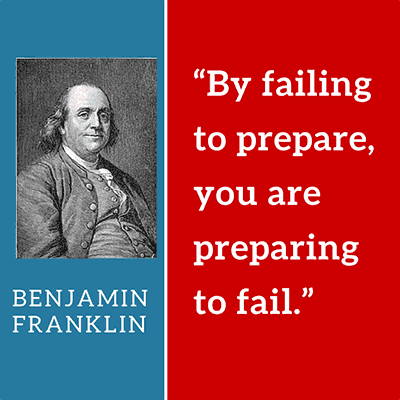Strategic Planning with Remote Teams Part 2: Preparing to Plan

This post is the second in a series. You can find the whole series in our Complete Toolkit for Strategic Planning with Remote Teams.
When I worked at larger companies as a product manager, I LOVED to get invited to strategic planning sessions. These were usually held at a nearby hotel or corporate meeting/vacation center.
Snacks and lunch were provided, drinks afterwards, and I felt ever so important to be a junior team member invited to sit with the executives.
Best of all, they never asked me to prepare a thing or even make any overt commitment to the resulting plan.
It was like a luxury vacation from email, with chocolate, and I loved it.
Of course, I have no idea what the strategic plans actually said afterwards, because down in the trenches, we never used them again.
Let’s not do that here.
This post is the second in a series discussing a process for running strategic planning with remote teams designed by Upstream Meetings. See the first post here:
An Intro to Strategic Planning with Remote Teams.
With this process, you’re aiming for a strategic plan that’s rooted in a clear understanding of your current situation, and that lays out a framework for moving forward that your whole team understands and embraces. As Steve Blank so clearly stated, Strategy is Not a To Do List. This leaves no room for chocolate-snarfing freeloaders in the process; everyone must actively contribute to building the plan for it to succeed.
To run strategic planning with a remote team, you must increase each participant’s individual responsibility for preparing and working outside the meeting. It’s the only way to get through planning within the time during which people can effectively engage online.
The happy side-effect: when your team does get together, every person will come with key insights and will actively contribute ideas that shape the resulting plan. When people are this involved in the process, they will also buy-in to implement the plan! This plan will be their baby, not some execu-garblety-gook destined for the round file.
4 Questions to Answer Before You Begin Strategic Planning
1. People: Who should you involve?

If someone will be impacted by the decisions laid out in the strategic plan, you want to involve them in the strategic planning process.
Mind the verb: Involve. This does not mean you should invite all these people to your planning sessions.
There are several ways to involve people in the strategic planning process before you ever schedule a meeting.
- Do you have customers, clients or members? Survey them.
- Larger teams and multiple departments? Ask each department to provide their own perspectives into the process.
- Investors or mentors? Spend some focused, individual time learning how they feel you’re doing, where you should head next, and more.
For the planning meetings themselves, invite those people who will be most directly responsible for making the strategy work. You want that session full of people who will care deeply about the strategies you create, because they know it will govern what they do each day in the months that follow.
Usually this means your senior executives, but not exclusively. In our case, we included the founding partners and senior employees from both engineering and marketing.
2. Context: Where are you now?

In the introduction to this series, I talked about the strategic plan acting as a map.
At the end of the process, you could hand your team a beautiful map showing how to get from San Francisco to Disneyland, but if they’re sitting in Alaska, it won’t do them any good.
You want to gather and share as much information as you can before the first meeting to help paint an accurate picture of where you are.
This includes:
- The surveys and interviews with your stakeholders
- Any existing strategic plan
- Competitive analysis (if you have one)
- Relevant analyst reports and industry trends
- etc.
When I attended those big in-person sessions, they always started with hours of PowerPoint meant to give us context. It wasn’t great then, and when planning with a remote team, it’s a total killer. It just doesn’t work.
Instead, give everyone invited responsibility for assembling some part of this information, and share it all online in advance.
Considering scheduling a short pre-planning meeting where everyone can ask questions about what you’ve learned. This is strictly a discussion meeting; there should be no presentations, as everyone must read the reports in advance.
3. Tools: Which software will you use to collaborate?
During these planning sessions, you’ll need access to the following:
- Phone or video conferencing
- A timer
- A way to update and walk through the agenda
- A way to brainstorm, group, and rank ideas online
- A collaborative editing space
- A way to track and assign tasks
Of the above, Lucid works great for everything but the brainstorming part. While you could use Lucid to list and rank ideas, our next post will list other apps that make the process more enjoyable.
If you don’t use Lucid, make sure you have each of the required features covered some other way.
Improve Your Skills with Meeting School
4. Scheduling: When will you meet?
Finally, schedule your planning meetings.
If you run through the entire process, you’ll have five sessions. These sessions build on each other. For example, you can’t effectively plan your strategies until you have clear Goals.
As a reminder, the five sessions are:
- Vision
- Mission
- Goals
- Strategies
- Values
Note: You can schedule the Values session first or last. The Lucid team prefers to run that first, Anna usually runs it last, both work.
When you end each session, your team will have to do more work to complete that part of the plan. Then, they will need to individually prep for the next session.
We needed 3 to 5 days between sessions for our team, because we worked to fit them in to our already packed schedules. While you could possibly schedule these meetings closer together, we found having that time between sessions to really digest and refine what we learned extremely valuable.
Take-Aways
Before starting the strategic planning process with a remote team, you need to:
- Involve stakeholders in getting a clear picture of your current situation
- Share and discuss that context with the people you’ll invite to the planning sessions
- Select and test the software you’ll use during each meeting
- Schedule out the sessions with time between each for independent work
If you’ve been involved in remote strategic planning, what else would you recommend?
Ready to dive in? Read other posts in this series, download meeting agendas, and get the meeting templates here.
The next post in this series: Crafting the Vision and Mission Statements



